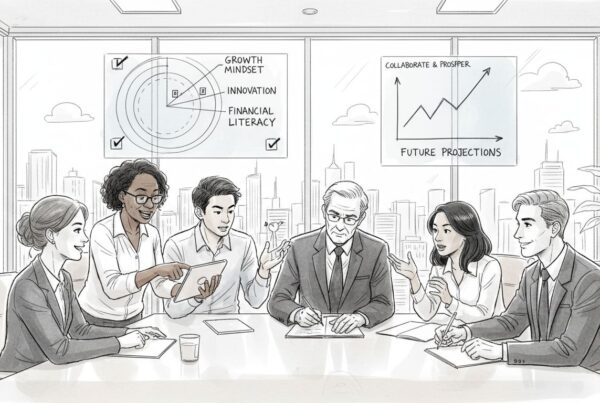Most advice about changing your money mindset skims the surface, yet beliefs about money run much deeper than daily spending habits. More than 95% of your money mindset is formed in your early childhood years, and research shows that childhood money attitudes can quietly shape your entire financial life well into adulthood. Recognizing and reshaping these patterns can transform how you earn, save, and invest. If you are ready to stop self-sabotage and start building true financial freedom, learning how to master your money beliefs is the first step.
Table of Contents
- Step 1: Assess Current Money Beliefs
- Step 2: Identify Limiting Financial Patterns
- Step 3: Reframe Money Narratives
- Step 4: Implement Empowering Habits
- Step 5: Evaluate and Optimize Workflow
Quick Summary
| Key Point | Explanation |
|---|---|
| 1. Conduct a money belief audit | Reflect on childhood financial teachings and patterns to understand your money mindset. |
| 2. Identify financial behavior patterns | Track spending and emotional reactions to uncover habits that may hinder financial success. |
| 3. Reframe negative money narratives | Transform limiting beliefs into positive affirmations to enhance financial confidence. |
| 4. Implement structured financial habits | Establish daily routines that reinforce your empowering new money beliefs. |
| 5. Regularly evaluate financial progress | Conduct quarterly reviews of your financial habits and adjust strategies as needed for continual growth. |
 |
|
Step 1: Assess Current Money Beliefs
To master your money mindset, you must first uncover the underlying beliefs driving your financial behaviors. According to research from Psychological Science, understanding how your personality influences spending can significantly impact your overall life satisfaction. This step is about diving deep into your subconscious money narratives and identifying patterns that might be holding you back.
Start by conducting a personal money belief audit. Grab a journal and answer these reflective questions honestly: What did you learn about money growing up? How do your parents discuss financial topics? What emotions arise when you think about earning, spending, or saving money? Track the recurring themes in your responses. Look for consistent narratives like “money is scarce,” “wealthy people are greedy,” or “I will never be financially successful.” These underlying beliefs create invisible scripts that shape your financial decisions.

As Cambridge research suggests, systematically examining your economic beliefs provides critical insights into financial behavior. Pro tip: Be gentle with yourself during this process. These beliefs were often formed in childhood and are not a reflection of your current potential. Recognizing them is the first powerful step toward rewriting your money story. In the next step, we will transform these insights into actionable strategies for financial empowerment.
Step 2: Identify Limiting Financial Patterns
Now that you have assessed your initial money beliefs, it is time to identify the specific financial patterns that might be sabotaging your success. According to research from Phys.org, our money beliefs formed in childhood can dramatically influence our financial behaviors and relationships, making this step crucial for personal transformation.
To uncover your limiting financial patterns, create a comprehensive financial journal tracking your spending, emotional reactions, and decision-making processes for one month. Look for recurring themes such as impulsive spending during emotional stress, avoiding financial conversations, consistently undervaluing your work, or making decisions based on fear rather than strategy. Pay special attention to moments when money triggers intense emotional responses. Are you experiencing anxiety when checking bank statements? Do you feel guilt after making purchases? Do you reflexively say no to opportunities that require financial investment?
As Psychological Science research suggests, how we think about money profoundly impacts our behavior. Pro tip: Approach this process with curiosity rather than judgment.
These patterns are not character flaws but learned responses that can be consciously reprogrammed. Your awareness is the first powerful step toward creating a healthier financial mindset. In our next section, we will begin transforming these insights into actionable strategies for financial empowerment.
Step 3: Reframe Money Narratives
As you uncover your limiting financial patterns, the next critical step is actively rewriting your money story. According to research from Creighton University, our deeply ingrained money scripts frequently formed during childhood significantly impact our financial behaviors and potential for success.
Begin the reframing process by transforming negative money narratives into empowering statements. If your current belief is “I will never have enough money,” replace it with “I am capable of creating financial abundance.” If you previously thought “Money is the root of all problems,” shift to “Money is a tool that helps me create positive opportunities.” Write these new narratives down and repeat them daily. Practice visualizing yourself making confident financial decisions, receiving income, and managing resources with wisdom and grace. Challenge yourself to take small financial actions that contradict your old limiting beliefs.
Research from Texas Tech University using the Klontz Money Script Inventory highlights how systematic reframing can transform financial behaviors. Pro tip: Be patient with yourself. Changing deeply rooted beliefs takes consistent practice and self compassion. These new narratives are not just words but powerful neurological reprogramming tools. In our next section, we will explore practical strategies for translating these reframed beliefs into tangible financial actions.
Step 4: Implement Empowering Money Habits
After reframing your money narratives, the next crucial step is transforming those new beliefs into consistent financial behaviors. According to the Motley Fool Foundation, understanding your financial mindset is the foundation for implementing habits that support smarter decision making and long term wealth creation.
Start by creating a structured daily financial routine that reinforces your new money narrative. This might include setting aside 15 minutes each morning to review your financial goals, tracking expenses in a dedicated app, or practicing gratitude for your current financial resources. Choose three specific habits that directly challenge your previous limiting beliefs. For instance, if you previously avoided looking at your bank statements, commit to reviewing them weekly with curiosity instead of anxiety. If you believed you cannot save money, start by automatically transferring even a small amount like 50 dollars into a savings account each month.
As research from Sophia Learning emphasizes, recognizing the psychological aspects of financial behaviors is key to sustainable change. Pro tip: Track your new habits using a simple habit tracker or journal. Celebrate small wins and be patient with yourself as you rewire years of ingrained financial thinking. These consistent small actions will gradually reshape your relationship with money. In our final section, we will explore strategies for maintaining and accelerating your new financial mindset.
Step 5: Evaluate and Optimize Workflow
With your empowering financial habits now in place, the final step is creating a systematic approach to continuously evaluate and refine your money mindset workflow. According to research from DOAJ, developing comprehensive measures for assessing money attitudes and beliefs is crucial for long term financial transformation.
Implement a quarterly review process to assess your financial progress and recalibrate your approach. Create a personal financial dashboard that tracks key metrics like savings rate, investment growth, debt reduction, and emotional response to financial decisions. During these reviews, ask yourself reflective questions: Are my new habits creating the desired outcomes? Where am I experiencing resistance? Which strategies feel most natural and sustainable? Be brutally honest about what is working and what needs adjustment. Consider using spreadsheets or financial tracking apps to maintain objective records of your progress.
Research from SCIRP highlights the importance of continuous economic socialization and learning. Pro tip: Treat this optimization process as an ongoing experiment rather than a rigid performance evaluation. Your financial workflow is a living system that requires compassionate adaptation. Celebrate your growth, learn from setbacks, and remain curious about your evolving relationship with money. By maintaining this adaptive mindset, you create a sustainable path toward financial empowerment and personal growth.
Transform Your Money Mindset Into Lasting Financial Success
Mastering your money mindset is more than just recognizing old beliefs and patterns. It is about rewriting your financial story and embedding empowering habits that unlock true abundance. If you struggle with limiting money narratives or find recurring emotional blocks around your finances, you are not alone. This article outlines the essential steps to evaluate, reframe, and optimize your money mindset, but lasting change takes guided support tailored to your unique journey.

At SimoneCR.com, we specialize in empowering entrepreneurs and business owners to break free from financial anxiety and self-sabotage by blending mindset transformation with strategic business growth. Check out our money mastery programs. Take the first step now to build a sustainable money mindset workflow through Simone’s expert coaching, courses, and resources designed to support your personal and professional growth. Discover more at SimoneCR.com and start transforming your financial future today.
Frequently Asked Questions
How do I assess my current money beliefs?
Start by conducting a personal money belief audit. Grab a journal and reflect on questions about your childhood financial lessons, emotions tied to money, and recurring narratives.
What are limiting financial patterns, and how can I identify them?
Limiting financial patterns are negative habits or beliefs that hinder your financial success. Track your spending and emotional responses for one month to spot themes, like impulsive spending or avoidance of financial discussions.
How can I reframe my negative money narratives?
Reframe negative thoughts by transforming them into positive, empowering statements. For instance, change “I can’t save money” to “I am capable of saving for my future” and repeat these new thoughts daily.
What empowering habits should I implement to support my new money mindset?
Create a daily financial routine that reinforces your new beliefs, such as reviewing your financial goals each morning or tracking expenses regularly. Start with small, manageable actions, like saving $50 monthly to build positive habits over time.
How do I evaluate and optimize my money mindset workflow?
Implement a quarterly review of your financial progress by creating a personal financial dashboard that tracks key metrics. Reflect on your habits and outcomes, and adjust your strategies as needed to continuously improve your financial mindset.
How long will it take to see changes in my money mindset?
While the timeline varies by individual, consistent practice of your new habits can lead to noticeable changes within 30–60 days. Focus on celebrating small wins to maintain motivation and reinforce your progress.



